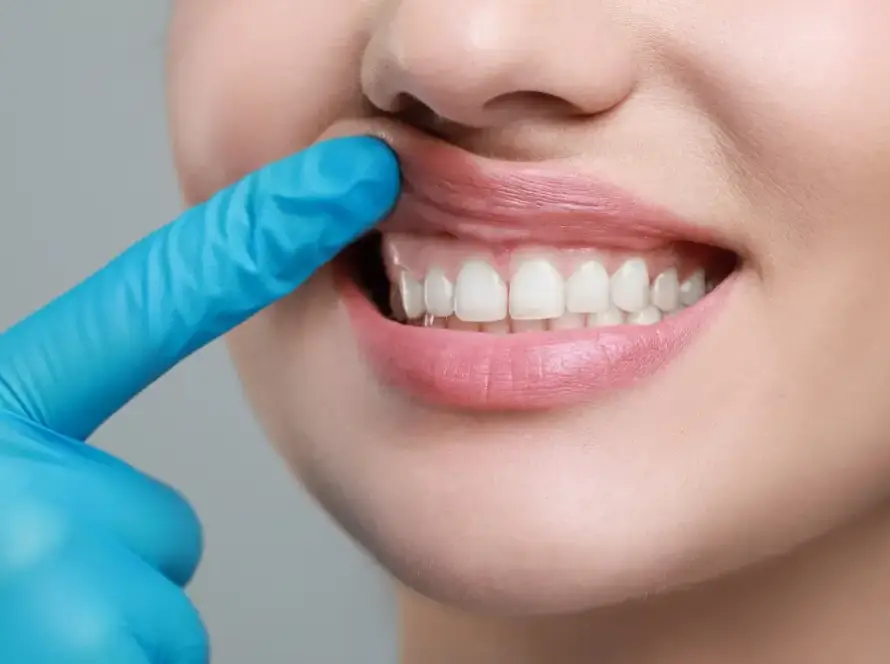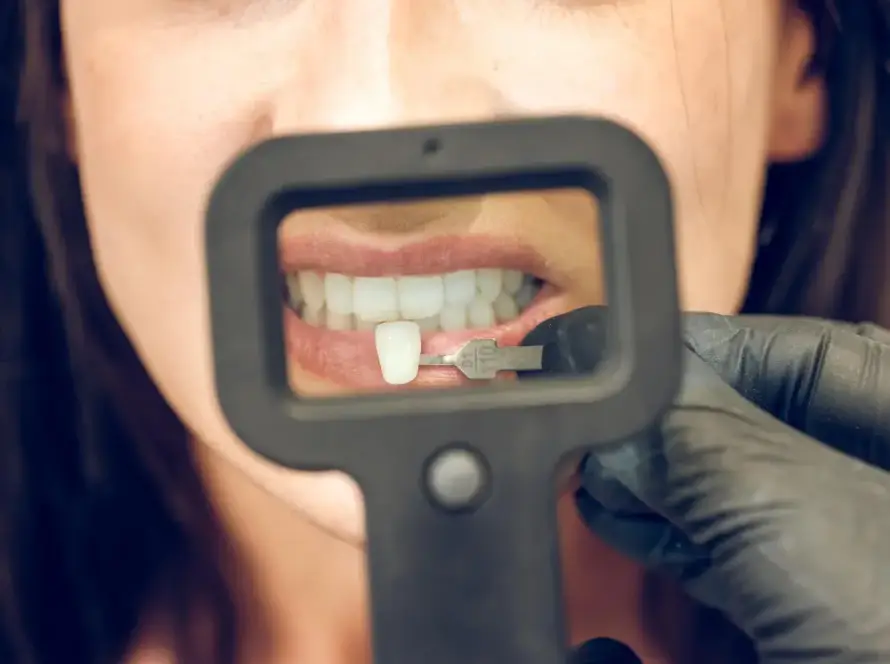Buck teeth, also known as malocclusion or overbite, refer to a dental condition where the front upper teeth protrude significantly beyond the lower teeth when the mouth is closed. This misalignment can be caused by various factors, including genetic predisposition, abnormal jaw growth, thumb sucking, or prolonged use of a pacifier.
Buck teeth can lead to several issues, both cosmetic and functional. From a cosmetic standpoint, they can affect a person’s smile and self confidence. Functionally, buck teeth can impede proper biting and chewing, cause speech difficulties, and increase the risk of dental problems, such as tooth decay and gum disease.
It is essential to seek treatment for buck teeth to enhance both oral health and aesthetics.
Causes of Buck Teeth
There are several potential causes for the development of buck teeth. These include:
- Genetics: In many cases, the shape and alignment of teeth can be influenced by genetics. If a family member has buck teeth, there is a higher likelihood of inheriting the same dental condition.
- Thumb sucking or pacifier use: Prolonged thumb sucking or pacifier use, especially beyond the age of four, can result in the protrusion of front teeth. The pressure exerted by the thumb or pacifier can push the teeth forward, causing them to become misaligned.
- Malocclusion: Malocclusion refers to an abnormal bite, which can contribute to the development of buck teeth. If the upper and lower jaws do not align properly, it can cause the front teeth to jut forward.
- Tongue thrusting: Tongue thrusting is a habit where the tongue pushes against the front teeth while swallowing or speaking. Over time, this constant pressure can lead to the displacement of the teeth, causing them to become bucked.
- Poor oral habits: Poor oral hygiene practices, such as inadequate brushing and flossing, can lead to various dental problems, including buck teeth. Neglecting proper dental care can result in the development of dental conditions that contribute to the misalignment of teeth.
- Dental injuries: Trauma or injuries to the mouth or jaw can disrupt the normal alignment of teeth. If the front teeth are affected, they may shift forward, resulting in the appearance of buck teeth.
It’s important to note that these causes can vary among individuals. Consulting with a dental professional is crucial in order to determine the specific cause of buck teeth and develop an appropriate treatment plan.
Treatments for Buck Teeth
There are several treatment options available for individuals with buck teeth, depending on the severity of the condition and the underlying causes. Here are some common treatments used to address buck teeth:
- Braces: Braces are a popular treatment choice for buck teeth. They work by using pressure to gradually move the teeth into proper alignment. Braces can effectively close gaps and correct the protrusion of buck teeth, resulting in a straighter and more aesthetically pleasing smile.
- Retainers: Retainers are often used after braces to maintain the corrected position of the teeth. They can also be used as a standalone treatment for mild cases of buck teeth. Retainers work by holding the teeth in their new position, preventing them from relapsing.
- Extraction: In some cases, extracting one or more teeth may be necessary to create enough space for the remaining teeth to align properly. This approach is typically considered for severe instances of buck teeth, where overcrowding is a significant concern.
- Dental bonding: Dental bonding involves using tooth colored resin materials to reshape and contour the teeth. It can be an effective treatment for minor cases of buck teeth, where a small amount of tooth reduction is required to achieve proper alignment.
- Veneers: Veneers are thin shells made of porcelain or composite resin that are bonded to the front surface of the teeth. They can be used to improve the appearance of buck teeth by providing a more proportionate and symmetrical smile.
- Surgery: In rare cases, when the jaw alignment is severely affecting the appearance and function of the teeth, orthognathic surgery may be necessary. This surgical procedure aims to reposition the jaw, allowing for proper alignment of the teeth and improving both aesthetics and functionality.
It’s important to consult with a qualified orthodontist or dentist to determine the most suitable treatment option for buck teeth. They will evaluate the individual’s specific needs and develop a personalized treatment plan to achieve optimal results. Timely intervention and appropriate treatment can significantly improve the appearance and functionality of buck teeth, enhancing overall oral health and self confidence. Contact us.
Is Buck Teeth Genetic?
Buck teeth, or malocclusion, can have genetic factors that contribute to their development. Genetic predisposition can play a significant role in determining the alignment and shape of a person’s teeth. If one or both parents have buck teeth or other dental misalignments, there is a higher likelihood that their children may also develop similar issues.
The specific genes responsible for buck teeth are still being studied, but a family history of malocclusion increases the chances of inheriting the condition. However, it’s important to note that genetics are not the sole determining factor. Other environmental factors, such as thumb sucking, prolonged pacifier use, or mouth breathing, can also contribute to the development of buck teeth.
If you have concerns about buck teeth or a family history of malocclusion, it is best to consult with an orthodontist or a dental professional. They can evaluate your dental health, discuss treatment options, and provide guidance on how to manage or prevent the progression of buck teeth.
Childhood Habits
Childhood habits can play a significant role in the development of buck teeth. Some common habits that can contribute to this dental condition include:
- Thumb sucking: Sucking the thumb can exert pressure on the front teeth, pushing them forward and causing the upper jaw to narrow. Prolonged thumb sucking can influence the alignment of the teeth and lead to buck teeth.
- Pacifier use: Similar to thumb sucking, prolonged use of pacifiers can result in the same dental issues. The pressure exerted on the front teeth can cause them to protrude, leading to a buck teeth appearance.
- Tongue thrusting: When the tongue pushes forcefully against the front teeth, it can affect their natural position. Habitual tongue thrusting can cause the front teeth to move forward, contributing to the development of buck teeth.
- Mouth breathing: Breathing through the mouth, especially during childhood, can impact the positioning of the teeth and jaw. Constant open mouthed breathing can lead to the teeth not aligning properly and cause the front teeth to protrude.
It is crucial to address these childhood habits early on to prevent the progression of buck teeth. Parents should encourage proper oral habits and seek orthodontic intervention if necessary. Early detection and intervention can help correct the underlying issues and support the healthy development of teeth and jaw alignment.
Effects of Buck Teeth
Buck teeth can have various effects on an individual’s oral health, appearance, and overall well being. Understanding these effects is crucial for determining the necessary treatment options. Here are some of the common effects of buck teeth:
- Poor aesthetics: Buck teeth can affect the appearance of a person’s smile, leading to self consciousness and low self esteem. The protrusion of the upper front teeth can create an imbalance in facial harmony, making individuals feel uncomfortable with their appearance.
- Increased risk of dental injuries: The protruding front teeth are more vulnerable to trauma and injuries, as they extend further than normal. Activities such as sports and accidents can pose a higher risk of damaging these teeth, resulting in fractures or other dental injuries.
- Difficulty in biting and chewing: Buck teeth can disrupt the proper alignment of the upper and lower teeth. This misalignment can make it challenging to bite and chew food effectively, leading to issues such as inefficient digestion and discomfort while eating.
- Speech problems: In some cases, buck teeth can affect proper speech pronunciation. The protrusion can interfere with the placement of the tongue and the ability to articulate certain sounds correctly, leading to difficulties in clear speech.
- Oral hygiene challenges: The misalignment caused by buck teeth may make it more challenging to clean the teeth and gums thoroughly. As a result, individuals with buck teeth may have difficulties reaching certain areas, increasing the risk of plaque buildup, tooth decay, and gum disease.
- Temporomandibular joint disorders (TMJ): Buck teeth can disrupt the proper alignment of the jaw, leading to TMJ disorders. TMJ disorders can cause symptoms such as jaw pain, headaches, jaw clicking or popping, and difficulties in opening and closing the mouth properly.
It is important to address these effects of buck teeth through appropriate treatment options, including orthodontic interventions and corrective procedures. By seeking timely professional help, individuals can improve their oral health, enhance their appearance, and restore their overall confidence.
Potential Complications
When left untreated, buck teeth can lead to a variety of potential complications. These complications can affect both the physical and psychological well being of an individual. Some potential complications of buck teeth include:
- Speech and Pronunciation Issues: Buck teeth can significantly impact speech and pronunciation. The misalignment of the teeth can create difficulties in producing certain sounds, leading to speech impediments.
- Dental Problems: Buck teeth can increase the risk of dental problems such as tooth decay, gum disease, and temporomandibular joint disorders (TMJ). The protruding teeth are more susceptible to damage and may be challenging to clean effectively.
- Bite Problems: Buck teeth can also cause bite problems, such as an overbite or an open bite. An overbite occurs when the upper front teeth significantly overlap the lower teeth, while an open bite refers to a gap between the upper and lower front teeth when the individual bites down. Bite problems can affect the ability to chew properly.
- Facial Aesthetics: The appearance of buck teeth can have a significant impact on an individual’s self esteem and overall facial aesthetics. Some people may feel self conscious about their smile and avoid social interactions or experiences that draw attention to their teeth.
- Emotional and Psychological Effects: Buck teeth can have emotional and psychological effects, particularly on children and teenagers. They may experience bullying, low self esteem, and decreased confidence as a result of their dental appearance.
It is essential to address these potential complications by seeking timely orthodontic treatment for buck teeth. Early intervention can minimize the risk of further complications and improve both the physical and emotional well being of the individual.
Preventive Measures
While buck teeth can be corrected through various treatments, it is always preferable to prevent their development in the first place. Here are some preventive measures that individuals can take to minimize the risk of developing buck teeth:
- Early orthodontic evaluation: It is important for children to have an orthodontic evaluation by the age of 7. This allows orthodontists to identify any potential issues and intervene early if necessary.
- Promote proper oral habits: Encouraging children to adopt good oral habits can help prevent the development of buck teeth. This includes regular brushing, flossing, and avoiding prolonged use of pacifiers or thumb sucking.
- Monitor jaw and tooth alignment: Parents and caregivers should be attentive to any irregularities in their child’s jaw and tooth alignment. If any concerns are noticed, it is advisable to consult an orthodontist for further evaluation.
- Protect teeth during physical activities: Wearing mouthguards during sports activities or at times when there is a risk of dental trauma can help prevent injuries that may lead to misalignment and buck teeth.
- Avoid excessive bottle or sippy cup use: Prolonged bottle or sippy cup use, especially beyond the recommended age, can lead to the development of malocclusion. Limiting their use can help reduce the risk of buck teeth.
- Maintain a healthy diet: A balanced diet that is low in sugar can contribute to healthy jaw development and prevent dental issues, including buck teeth.
It is important to note that while these preventive measures can reduce the risk of developing buck teeth, not all cases of misalignment can be avoided. Regular dental check ups and early orthodontic interventions remain crucial in addressing any issues that may arise.
How Long Does It Take To Get Rid Of Buck Teeth?
The timeframe for correcting buck teeth can vary depending on the severity of the condition, age of the patient, and the chosen treatment method. In general, treatment for buck teeth can take anywhere from several months to a few years.
For children and teenagers, the duration of treatment is usually shorter as their bones and teeth are still growing and can be easily manipulated. In mild cases, braces or aligners may be used to gradually shift the teeth into their proper position. This process typically takes between 6 months to 2 years.
In more severe cases of buck teeth, where the jaw structure needs to be adjusted, a combination of braces and other orthodontic appliances may be required. These treatments can take longer, ranging from 2 to 4 years, as they involve more complex dental movements and adjustments.
It’s important to note that everyone’s orthodontic treatment timeline is unique and can be influenced by factors such as the patient’s compliance with wearing appliances, attending regular dental appointments, and following the orthodontist’s instructions.
To get an accurate estimate of the time required to correct buck teeth, it is recommended to consult with an orthodontist. They will assess the individual case and provide a personalized treatment plan, which includes an estimated duration for achieving the desired results.















